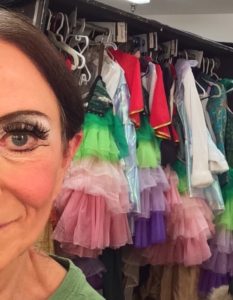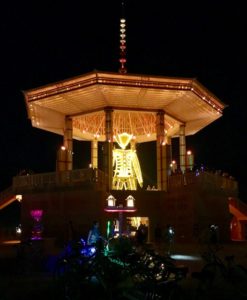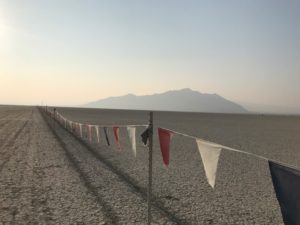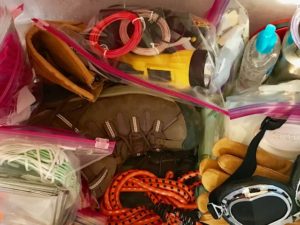Category — Taking on challenges
Up, Up and Away
Airborne. 34,824 feet above the earth, following the Columbia east, then across Montana on a diagonal, nosing north to Regina on a path to the far reaches of Manitoba, cutting an arc across Great Hudson’s Bay, nipping the tip of southern tip of Greenland, then undercutting Iceland, before traversing a swatch of the North Atlantic. Boom. Europe in nine hours.
It is still all a miracle to me: How I can get to Amsterdam faster than I can drive to San Francisco. How this enormous machine with more than 300 people aboard can defy gravity. How I can sit here gazing out the window, taking cloud pics, writing, drinking Perrier with lime, when for so very many years I told myself I could not get on an airplane. I would not fly. I could not fly. I was a person who did not fly. That was my identity. That was the looped tape inside my head.
I had had one of those flying experiences early in my college years that makes you promise eternal devotion to God, vow to be good forever and swear to never ever be airborne again if only the plane you are on will land safely and you will not die. The plane landed safely. I did not die. God did not become a fixture in my life. I was not good forever. But I did keep one promise: I did not get on another plane for 25 years.
I didn’t stop traveling. I took trains back and forth across the U.S., a happy passenger exploring just about every Amtrak route in America. I had adventures. I wrote magazine stories about trains. I told myself that I was just a train person. Maybe so. But I was also a person afraid to fly.
And then, three things happened. (#1) I was riding along a particularly beautiful stretch of the Willamette River bike path on a particularly beautiful fall day, and I thought, all of a sudden: what if I just took off the (metaphorical) backpack weighing me down, the one with the old tapes about what I could and couldn’t do, what I convinced myself I was afraid of. What if I stopped my bike, shook off the damned backpack and just left it by the side of the road. Metaphorically, not litter-ly. So I did.
Then (#2) I met, through a friend, a lovely woman named Rosemarie who practiced something called “creative visualization, which I assumed was New Age bullshit. But it wasn’t. And she gracefully guided me through peaceful, empowering scenarios that allowed me to create new tapes inside my head.
And then (#3) I got a surprise invitation to be a guest on the David Letterman show for one of my books. (The short notice would make a train impossible). For some reason, I thought this would make my career, It didn’t. But it did get me on a plane. (I have a Xanax-dimmed memory of my husband dragging me down the jetway. It was an ordeal, #1 and #2 and psychopharmaceutial enhancements notwithstanding.) But I did it.
Since then, going on 20 years ago, I have boarded scores of planes in scores of airports to scores of destinations. That’s what I’m doing right now. I am on a big bird flying across a continent and an ocean and a chunk of another continent.
I write this not to boast about my travels but to tell anyone out there—and you know who you are—that you CAN replace that no-I-can’t/ no-I-never-will tape inside your head, you can write a new narrative, you can do what you have so long been afraid to do. You can take to the skies.
May 2, 2018 1 Comment
I know why the caged bird sings
You know how sometimes you work really hard, I mean really hard, and you have the best of intentions, and you’re surrounded by people who are also working hard—and nothing happens?
This is not one of those times.
This is one of those times that commitment and passion and focus and hard work lead to something wonderful.
This is one of those times that good things happen to people for whom good things need to happen. One of those times that people who have been labeled as losers, who have been treated as losers, get to be winners. Because they worked for it. Because they deserve it.
And so I announce, with enormous pride, that two Oregon State Penitentiary men have won awards in the prestigious, national Pen America Prison Writing Contest: James Anderson placed first in the memoir category. Sterling Cunio placed second in the essay category.
To put this in perspective, Pen received more than 5,000 entries from prison writers all across the country.
To put this in perspective, neither James nor Sterling finished high school before they went to prison. James was 17, Sterling, 16 when they committed their crimes. To put this in perspective, Sterling turned 41 the day before he received the letter announcing the award.
Both these men, along with (give or take) 8 others, are part of a writers’ group I started for Lifers at OSP almost 3 years ago. Six men in the group began working on the Pen submissions more than a half a year before the due date.
I have never worked with writers hungrier for feedback, more eager to be edited, to revise and re-imagine, to work through multiple drafts without losing focus or energy. I have never worked with writers who had more important stories to tell.
Learning to tell your own story is powerful stuff. Particularly, especially, spectacularly for those whose only freedom is expression.
Pen will be publishing the winners at its site.
If you’d like to congratulate these winners, leave a comment and I will take it with me into the prison.
April 25, 2018 10 Comments
What if I regret leaving the comfort zone?
Here is an interview I just did with B3 magazine. The magazine is sponsoring a book giveaway right now. Visit the site!
One of our favorite things about ringing in the New Year is that it’s an annual reminder to shake things up in a big way. But as refreshing as grand-scale changes can be, they can also feel paralyzingly daunting—and that makes for prime negative-self-talk territory (Who am I to think I can do this? What if I fail? What if I regret leaving my safety zone?).
If you can already hear the doubts creeping into your New Year’s goals, stop what you’re doing and read our interview with Lauren Kessler, author of Raising the Barre: Big Dreams, False Starts, and My Midlife Quest to Dance the Nutcracker. When Kessler decided in mid-life to pursue her dream of dancing in the famous ballet, she could have found a million reasons to talk herself out of it. Read on to find out how she dealt with the negative self-talk, why it’s important to embrace change no matter what your age, and how making one big leap led to another even bigger one. (Kessler’s story is so powerful that Sadie gave a copy to each B3 studio owner when it first came out!)
B3 MAGAZINE: What advice do you have for someone who is considering changing course a little later in life?
LAUREN KESSLER: Simple advice: DO IT. Challenging yourself, making changes, leaving your comfort zone, raising the bar on your own life is exhilarating. Yes, also undeniably scary—but it presents an extraordinary opportunity for growth. Creating and embracing meaningful change “a little later in life” keeps you vibrant and vital, curious and interesting, humble and in learning mode—in other words, youthful. It’s not that you shouldn’t think hard about making real changes, but you can think yourself out of it. You do not have to be convinced that you can be successful, only convinced that you can bring energy, passion, and commitment to the endeavor.
B3 MAGAZINE: A lot of women reach a point in their lives when they want to take a leap, but sometimes they don’t know exactly what that leap is. Can you talk about how you landed on dancing in the Nutcracker as your big leap?
LK: Dancing in The Nutcracker was a big leap, not THE big leap. My reasons for choosing this challenge were complicated. I had loved ballet as a child and been told I had “the wrong body” at age 12. That statement by my (very famous) ballet teacher has resonated in my life for four decades. I wanted to revisit that, silence that negative self-talk so deeply embedded. I also wanted to confront and test the cliché “you’re never too old to___________.” Could I, in fact, get my mid-life body into shape to dance on stage with a professional company—or are there some things it really is “too late” to do? (Enter barre3, by the way. That’s how I did it.) As a writer, I embed myself in worlds I know little about and try to learn from that experience (and reveal it to readers). So another reason I chose The Nutcracker is that I was fascinated by not so much the world of ballet but the world of artists who give up so much for their art. The dancers I trained with, danced with, and befriended had very little other life than dance. I wanted to explore that level of passion and commitment.
B3 MAGAZINE: Negative self-talk is masterful at keeping us from trying new things. Can you talk about the negative self-talk you experienced, and how you quelled it?
LK: Aside from the “you have the wrong body” self-talk, there was also “you are too old,” “you will embarrass yourself,” “who do you think you are?” and “stick with what you know” self-talk. In fact, the self-talk was deafening. It was, at times, louder in my head than thinking. So…what did I do?
Instead of telling myself it was stupid and self-defeating to talk to myself this way (translation: I was stupid to think this way = just another form of negative self-talk), I carefully listened to each statement, pretending a close friend said these things about herself. How would I respond? My response to my “friend” who tells herself she has the wrong body? What a second, you have a strong, healthy body. It has seen you through 100-mile bike rides, killer mountain hikes, and three pregnancies. Wrong body? Ha! And so forth.
I am not sure it is possible to erase negative self-talk. For me, what works is creating positive (actually far more realistic) self-talk that speaks louder.
B3 MAGAZINE: Do you have any advice for people who want to make a change but are experiencing pushback from their loved ones?
LK: This is a very hard question, mostly because I cannot imagine someone who truly loves you standing in the way of life-enriching change. Or rather, the only way I understand this is to think this person is scared, too. You are scared to make the leap. The loved one(s) are scared this change will be threatening to the existing relationship. Talking through what you want to do and why you want to do it, what it means to your own growth, how this may enhance and deepen the relationship because it deepens you—this might help quell these fears and transform the pushback to loving support.
B3 MAGAZINE: Did taking this big leap give you the confidence to do other things you wouldn’t have considered before?
LK: Oh my, yes. I closed the door on a job that had become a black hole in my life (as in all the energy I put in got swallowed up). I had inhabited this job for a very very long time and had convinced myself it was central to my self-worth (and net worth). It wasn’t! I cannot fully express what a great decision leaving was. And how scared I was to make it. I am more creative, more focused on what matters, happier with myself and my work than I have ever been. I have learned to lean into the “yes.”
December 21, 2017 2 Comments
Let The Nutcracker season begin!
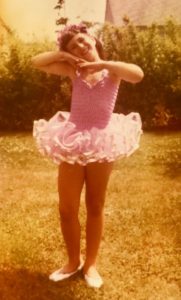 The Troyanoff Ballet Academy is a single-studio dance school, a storefront wedged between a dry cleaner and a pizza joint in a Long Island strip mall. My mother drives me there, twice a week, Tuesday and Thursday after school to take classes with Professor Troyanoff and his seriously arthritic wife, Madame Troyanoff. They were Russian dancers of little renown who left the Motherland between the two world wars. My mother calls them “white Russians” to distinguish them from the Reds, this being the Cold War.
The Troyanoff Ballet Academy is a single-studio dance school, a storefront wedged between a dry cleaner and a pizza joint in a Long Island strip mall. My mother drives me there, twice a week, Tuesday and Thursday after school to take classes with Professor Troyanoff and his seriously arthritic wife, Madame Troyanoff. They were Russian dancers of little renown who left the Motherland between the two world wars. My mother calls them “white Russians” to distinguish them from the Reds, this being the Cold War.
The distinction is lost on me. The inelegance of the Academy is lost on me. I am six, seven, eight, nine, and what matters is pulling on pale pink tights and a black three-quarter-sleeve leotard in the tiny dressing room no bigger than a closet, sitting on the bench on the side of the studio and carefully slipping my feet into soft leather slippers. What matters to me is standing at the barre: first position, demi-plié, plié, relevé, second position, third, fourth, fifth; tendus, battements, rond de jambs, arabesques; and later, in the center of the room, glissades, the thrill of the grand jété. What matters is dancing.
The Professor is a kindly middle-aged man with a handsome fleshy face and a luxuriant head of silver hair who wears snug t-shirts, billowing trousers and black leather ballet slippers. While he instructs, his accent so thick one or another of us has to ask him to repeat, again and again, his wife, stern and crabby, stalks the studio leaning on a cane. When one of us gets sloppy, when our grand pliés are not grand enough or our turn-outs are not turned out enough, she raps the back of our legs with the cane. It doesn’t hurt as much as the idea of it hurts. I learn much later that her ballet career in the old country crippled her before she turned forty.
The Professor loves to choreograph. He puts together bits and pieces of what my mother tells me are the classics, each little dance ending in dramatic grand tableaux with all sixteen or eighteen or twenty of us young dancers striking and holding poses. The Academy presents two parent-pleasing recitals a year held in whatever elementary school the Professor manages to persuade to host us. I love the music. I love learning the steps. I love the costumes, the lavender tutu edged in silver with matching silver-sprayed ballet slippers…
from the introduction to my book, Raising the Barre: Big Dreams, False Starts and My Mid-Life Quest to Dance the Nutcracker, to mark the publication of the PAPERBACK edition and the start of yet another Nutcracker season.
November 15, 2017 No Comments
Living with disasters, Iceland style
On the narrow, two-lane “highway” that skirts the southern coast of Iceland there are big, illuminated signs that track and report wind velocity. As Jón Ágúst, a quintessentially unflappable native Icelander explains, when the wind blows at a certain speed (the measurement is in meters per second so I’m not even going to bother to give you the stats), it is difficult to keep a car on the road.
When the wind is somewhat stronger, it is “not advisable,” he says, to be on the road. Even stronger wind can whip up gravel, pebbles, even rocks from the surrounding lava fields, creating a geological hailstorm that dents the bodies and breaks the windshields of cars whose owners chose to ignore the illuminated signs (or were Americans who could not do the meters to miles/ seconds to hour conversions). Jón Ágúst points out a new patch of asphalt on the road. It is, he says, a repair job after an “especially strong wind” sent chunks of asphalt flying, ripping up an entire section of the road.
Now the highway is paralleling a bridge, a very long bridge. “That’s the longest bridge in Iceland,” Jón Ágúst says. The bridge is not in use nor, as far as I can tell, does it bridge anything. “There used to a river there,” he explains. The river was formed during one of the country’s many volcanic eruptions and glacier runs. Then, during another of the country’s many volcanic eruptions and glacier runs, the river changed course. “But who knows,” says Jón Ágúst. He offers a hint of a smile. “We might need that bridge again some day.”
Why do I recount this for you? Because it speaks to the Icelandic attitude toward the vicissitudes of life—and boy do these people have vicissitudes—which stands in direct opposition to our Disaster! Catastrophe! Crisis! mentality. These people experience volcanic eruptions, lava flows, glacier runs, geological hailstorms, raging rivers, killer winds, deep freezes, financial exigencies, the fall of their government—which occurred with barely a ripple when I was there—and they make it through. They take care of business. Which is to say they don’t panic. They don’t cry “disaster.” They batten down the hatches; they look after their neighbors; they watch for sneaker waves; they stay off the road. They respect the volatility of their environment. They know how to survive. They know how to care for those who don’t.
October 4, 2017 1 Comment
Ignite. Or be gone.
At Burning Man, I was a virgin, as first-timers are called. Two weeks later, at the 19th gathering of the shamans in Iceland, I was the only uninitiated. And so, for close to a month, in two places on earth that could not be more geologically different, and at two gatherings that could not be more culturally and energetically dissimilar, I have been mulling the meaning of being the outsider and the insider, of the value of both, and of the surprisingly porous membrane between the two.
I began as an outsider to both experiences, I was an empty vessel, a sponge. Everything was new, mysterious, confusing – and that was both exciting and uncomfortable. It was like walking into an ongoing, animated conversation you very much wanted to understand and be part of but couldn’t. I asked the questions– to others, to myself – that a child asks: What is that? What are you doing? What does that mean?
Curiosity is a wondrous thing, and being an outsider is an stimulating place to be. But it is also a lonely place. An outsider is, alas, outside, outside the circle of friendship, the heat of the fire. An outsider is outside collective history, outside collective memory.
And then, a few days in, things begin to change. The experience of yesterday becomes a memory, the memory a story, the story shared. The days together accumulate, the stories accumulate. And one day you wake up and you realize there is a place for you, a place that is held being for you, and you slowly inhabit it. The circle expands to let you in.
Knowing that you can travel afar/
But that everywhere is home.
September 27, 2017 3 Comments
Burning Man
Burning Man asks the question: What would a contingent of privileged 21st century people do if they could do anything, if they were given a blank slate – the vast, stark, featureless playa – to create an instant community? The answer, as I observed as a Virgin Burner last week, is complicated. They–we–create beauty and ugliness, generosity and self-indulgence, Eden and dystopia and live for a week in a world of breathtaking sunsets and choking dust storms. Burners wash your dusty feet, take drugs, practice yoga at dawn, party all night, give away hot dogs and gin and tonics, make noise, dress in utility kilts or bootie shorts or tutus or nothing at all. They make art, big, bright, hard-edged art. They make music. They dance. They mist your scorched skin with precious water when you ride by on your bicycle. They tinker. They invent. They create something where nothing was. They make life in a dead place.
But they do not live lightly on this stretch of alkali flats. They use enormous resources to create this city of 70,000: thousands and thousands of gallons of potable water delivered by trucks, thousands of gallons of gray water spirited away, thousands of gallons of gas to power the blazing Art Cars that traverse the playa every night, thousands and thousands of gallons of propane to power the generators that support each camp. Hundreds of porta potties serviced every day. This is a resource-gobbling, tech-heavy vision of the future.
And mostly, despite the hugs everyone gives everyone and the gift economy (no money changes hands on the playa) and the many small kindnesses you encounter–and those you perform yourself–it is a harsh vision of the future. A post-apocalytpic vision of industrial grunge and consensual hedonism, with hulking trucks and laser beams scanning the night sky and blaring noise and too-bright lights, a Disneyland meets Las Vegas meets Mad Max world where strangers wash your naked body and you can spend an hour in the Orgasmatron on your way to watching fights in the Thunderdome.
On my last morning in Black Rock City, I was riding my playa-caked Hammer & Cyclery fat-tire bike on Lustrate, the farthest from the center street, a long, dusty several mile horseshoe of a ride. I was watching the dawn clouds dissipate in the already blistering heat. On one side of me was the city, on the other, the open playa. On the playa side, there was a grizzled man riding a squeaky bike pulling a trailer with a vintage boombox bungee-ed to the frame. As he came closer, I could hear the music. It was Donovan’s “Catch the Wind.” The innocence of that music, its softness, its almost silly simplicity, the gentleness of it. I stood there, straddling my bike, and I cried.
September 6, 2017 5 Comments
Getting UNcomfortable
I like making myself uncomfortable, placing myself somewhere I do not belong, where I am the new kid, confused, awkward, unsure — and thus alert, deeply curious, open to seeing, open to learning. I realize the privilege of this. I know many people live their entire lives feeling uncomfortable in their bodies, their families, their communities, our society. It’s not that I don’t have those feelings, all of those feelings, from time to time. But the fact is, I am safe. And so I have the privilege of purposely pushing myself into new situations that throw me off balance, the purpose being to understand people different than myself, to keep myself as humble as I can (that is, a learner, always a learner) and to test my own resilience.
I did this when I spent 18 months immersed in middle school to write about tween/teen girl culture. I did it when I joined a ballet company to see if I could reclaim an old dancing dream. And I am doing it now, and have been for the past two years, when I go up to Oregon State Penitentiary to spend time with a group of prison writers.
And tomorrow… for something completely different. Frivolous, yes, but also deeply deeply uncomfortable. Tomorrow I leave with a group of ten others to go to Burning Man. We are the Eugene contingent helping to staff a venerable bicycle rental and repair camp. Of course I have known about Burning Man for years, but I’ve never been in the least tempted to go. It seemed, well, male – it is Burning MAN – and insistently Millennial. And self-consciously arty. And suffused with all those drugs I didn’t need to do any more because, as Huxley said, once you open the doors of perception, you don’t have to keep opening them. Plus, in my dotage, I am more careful with my neurons.
But I’m going. I am going because I want the experience of helping to create a city of 70,000 people where nothing, and I mean nothing, exists, in a stark, ridiculously inhospitable environment in the middle of nowhere (well, actually, in northwestern Nevada). That, alone, terrifies me. And then there’s this: The tattoo on my back is older than most of the people I’m traveling and will be camping with.
I’ll report back. Don’t look for a post next Wednesday. I’ll be, as they say, “on playa.”
(One of THREE bins packed for The Burn, pictured above, includes nothing I’ve ever packed for a trip before: el-wire, dust masks, goggles, ear plugs, shemagh, Snow White halloween costume, combat boots.)
August 23, 2017 7 Comments
Sleep
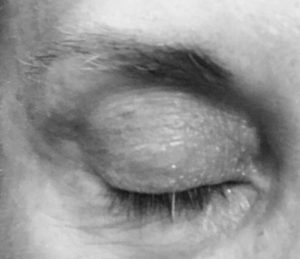 Let’s take a moment to contemplate the magic that is sleep.
Let’s take a moment to contemplate the magic that is sleep.
No, not: How much sleep do I need? What happens if I don’t get what I need? How can I sleep better? Deeper? How do I create the best “sleep hygiene”? What about insomnia? Sleep apnea? Sleeping pills? Circadian rhythms?
No.
I am talking about the transformative power of sleep. The way you can go to bed emotionally drained, psychologically fragile, wounded, staggering, after a day that ricochets you off hard surfaces, harder surfaces that you knew existed, places you didn’t want to go to but did, thoughts you didn’t want to think but did, emotions you were unprepared to feel but felt. That kind of day.
And you can’t think your way through it. And you can’t talk your way through it. And you can’t eat your way through it (although you try). But you can throw open the windows to a cool night and settle between clean sheets and close your eyes and breath, not imagining the impossible will happen.
And then it happens. You sleep. And you awake your own strong, true self. Ready. Again.
May 18, 2017 4 Comments
D E T E R M I N A T I O N
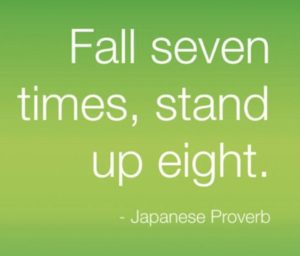 What does it mean to be determined?
What does it mean to be determined?
I’ve been thinking a lot about this lately, like many of us have, as we watch –in a state of almost indescribable horrific awe — the actions of a man determined to bring disrespect, dishonor and ridicule on the office of the presidency. And on our country. Which is to say on all of us.
But I have also been thinking about our determination, determination to show ourselves, our neighbors, our communities and the rest of the world what we value and what we are willing to fight for.
Which has got me thinking about what determination actually is and how to nurture it in ourselves and others. Because we need a lot of it. And we need it now, and we need it for the long haul.
Lest you think determination is an unpleasant scowling, grit-your-teeth experience, let me suggest just the opposite: Determination is a positive emotional feeling that involves persevering toward a difficult goal in spite of obstacles. It is about facing challenges with (I love this phrase) anticipatory enthusiasm. In the field of positive psychology – the best thing to happen to psychology since Freud died – determination is studied and identified as a constructive and optimistic force that compels us toward action and results in important outcomes.
One obvious outcome is that we “win.” Our determination defeats the obstacles. But that may be an in-it-for-the-long-haul outcome. What about in the meantime? In the meantime, as we are being our determined selves, we are nurturing perseverance and resilience. And as we persevere, we develop important coping mechanisms. As we persevere, we get stronger.
Determination in the face of daunting obstacles strengthen and empowers us. Strengthens and empowers. It fuels us. It stokes the fire.
Oh, and here’s something else from the woman who brought you Counterclockwise (that would be me): A number of studies have linked the meeting of challenges with determination to increases in physical health and mental well-being. Some specific positive outcomes include illness resistance, increased survival rates and decreased levels of depression.
March 22, 2017 1 Comment



